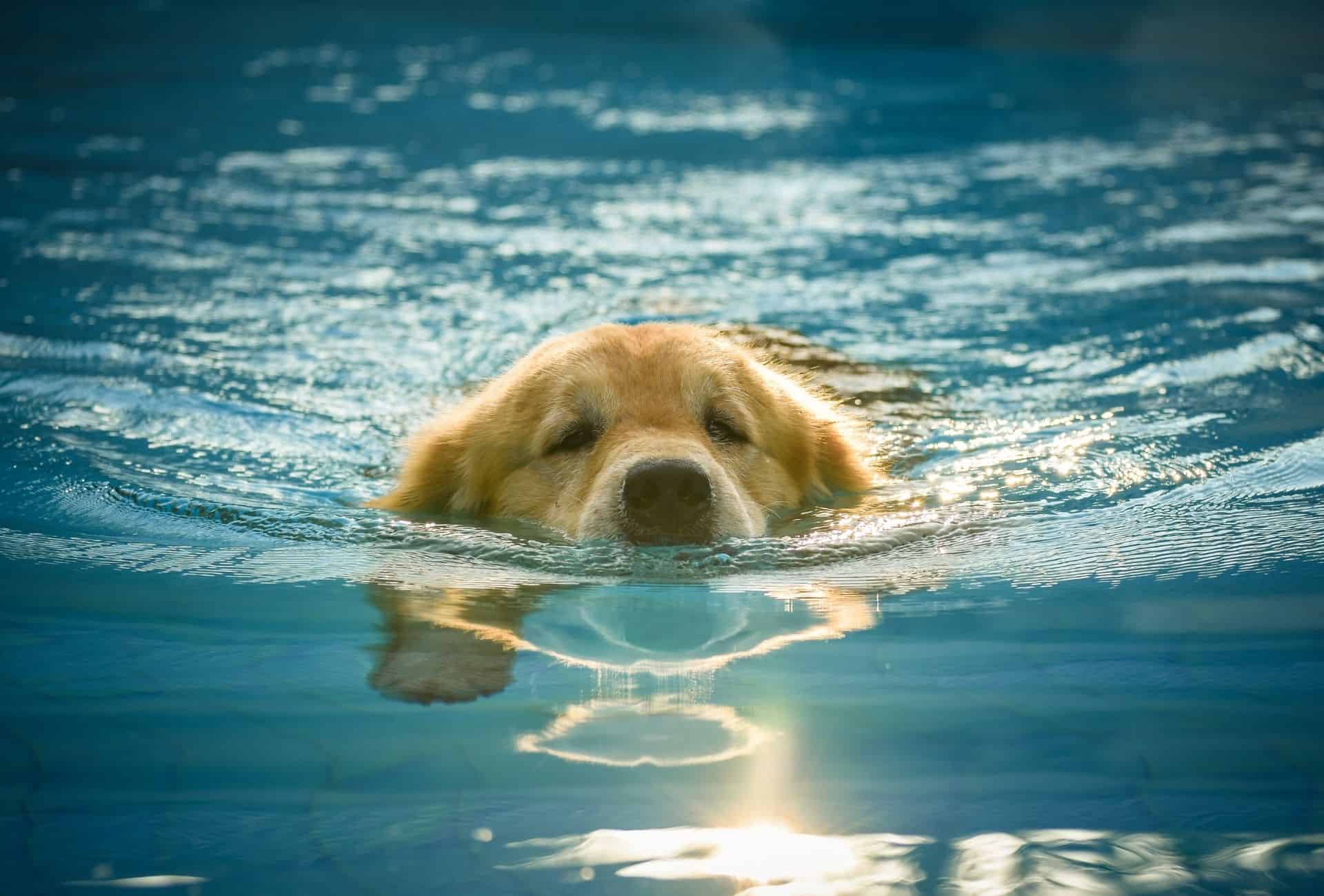For your dog, swimming is a fantastic restorative and healing activity. The time and effort needed to teach your dog to swim should definitely be planned for because swimming not only offers the chance to improve their health but can also have a very positive impact on both your and your pup’s mental health.
When dog owners take their canine companions swimming, they are constantly worried about how far and how long their friend can swim. Let’s go over that topic in more detail so you know what to anticipate.
Is Swimming or Running Better for Dogs?
Swimming can take the place of your current jogging or biking exercise because it is less taxing on the joints than running, even though it won’t replace regular walks.
According to rumor, DVM Arleigh Reynolds, a canine physiologist and clinical nutritionist, 1 minute of swimming is equivalent to 4 minutes of running.
That would mean that a 15-minute swim is equivalent to an hour of walking, making it sufficient for a good workout.
If you multiply that by two, you arrive at 30 minutes of swimming equaling 2 hours of walking, which is on the longer side for typical strolls.
Additionally, you can swim with almost any dog, whereas only healthy adult dogs should run, and even then, some breeds shouldn’t run at all.
You can swim with a dog as long as you don’t spend too much time in the water.
If you want to go swimming with an elderly person, no problem; swimming may be the best form of exercise for them.
On the other hand, a dog that is still growing (which can take up to 2 years for large breeds) would be restricted from serious running.
Using your dog’s sense of smell, which you might be sacrificing when running, makes them happy on walks
Even my Rottweiler prefers smelling on long walks over running next to the bike, though she’s fine with both. Some high-energy dogs do need longer sessions or more demanding exercise (don’t forget mental exercise!).
How Long Should a Dog Swim For a Good Workout?
Some dogs may only require 10-15 minutes of pure swimming, while others may require 20-30 minutes for an effective workout.
The type of swimming exercise a dog receives will depend on their personality, age, and general health.
Everything from five to sixty minutes is possible because different dogs are more engaged than others.
My dog usually needs a toy to get her into the water, but as long as you’re throwing it, she can swim for 30 minutes without any trouble.
Additionally, the risk of dry drowning and other problems actually increases once you pass a certain threshold or frequently use toys to entice your dog.

Photo by Mr Nai on Shutterstock
If you’re unsure of the length of time your dog should swim for a good workout, start with 5–10 minutes and increase it based on his response.
Can’t reach 10 minutes because your dog jumps back out right away?
But don’t push it; just try to encourage him with a ball or water toy.
For the first sessions, it’s fine if your dog only gets his paws wet.
Do not hesitate to end the swimming session earlier than anticipated if your dog is not enjoying it or you can tell that it is simply too challenging. There will be other opportunities.
Instead of expecting them to dive right in, gradually increase the amount of time spent in the water or the distance traveled each day.
If it’s offered in your area, consider hydrotherapy and talk to a professional about whether your dog should use it as exercise.
Remember that it’s crucial to give your dog enough time to get used to the cold water in hot climates.
There may be a health risk if you immediately transition from cold water to hot asphalt.
Another consideration is that their skin might become dry, they might consume more bacteria by drinking more lake water, etc.
Despite the fact that these are significant considerations, a healthy dog shouldn’t typically be prevented from engaging in a suitable swimming workout.
Helps older dogs live longer and healthier
Older dogs have weaker joints, making it challenging for them to get the recommended amounts of exercise. Swimming is a low-impact activity that is ideal for them because it puts less strain on their joints. Additionally, it strengthens your dog’s weak muscles and increases blood circulation to lessen any pain they may be experiencing.
FAQ
How long can a dog swim without stopping?
A fit adult dog can likely swim for 20 minutes before drowning, but the exact time depends greatly on the breed, age, and level of fitness of your dog.
How long is it safe for a dog to swim?
This occurs when a dog swims and swallows too much water. A common sign is throwing up after swimming. Godlevski advises keeping swimming sessions brief (10 minutes maximum) to avoid water toxicity. Additionally, she advises against submerging your dog’s large toy in the water.
Can a dog swim too much?
Lack of coordination, lethargy, nausea, bloating, vomiting, dilated pupils, glassy eyes, light gum color, and excessive salivation are signs of water intoxication in dogs. Advanced signs include seizures, collapsing, having trouble breathing, and losing consciousness.
Is it OK for my dog to swim everyday?
We bet you can also predict how the chlorine will impact him. The long and short of it is that if you don’t keep an eye on your dog’s skin, he’ll likely develop dry, flaky skin if he swims frequently. Chlorine and other chemicals can even remove the oils from his coat, making him appear lifeless.